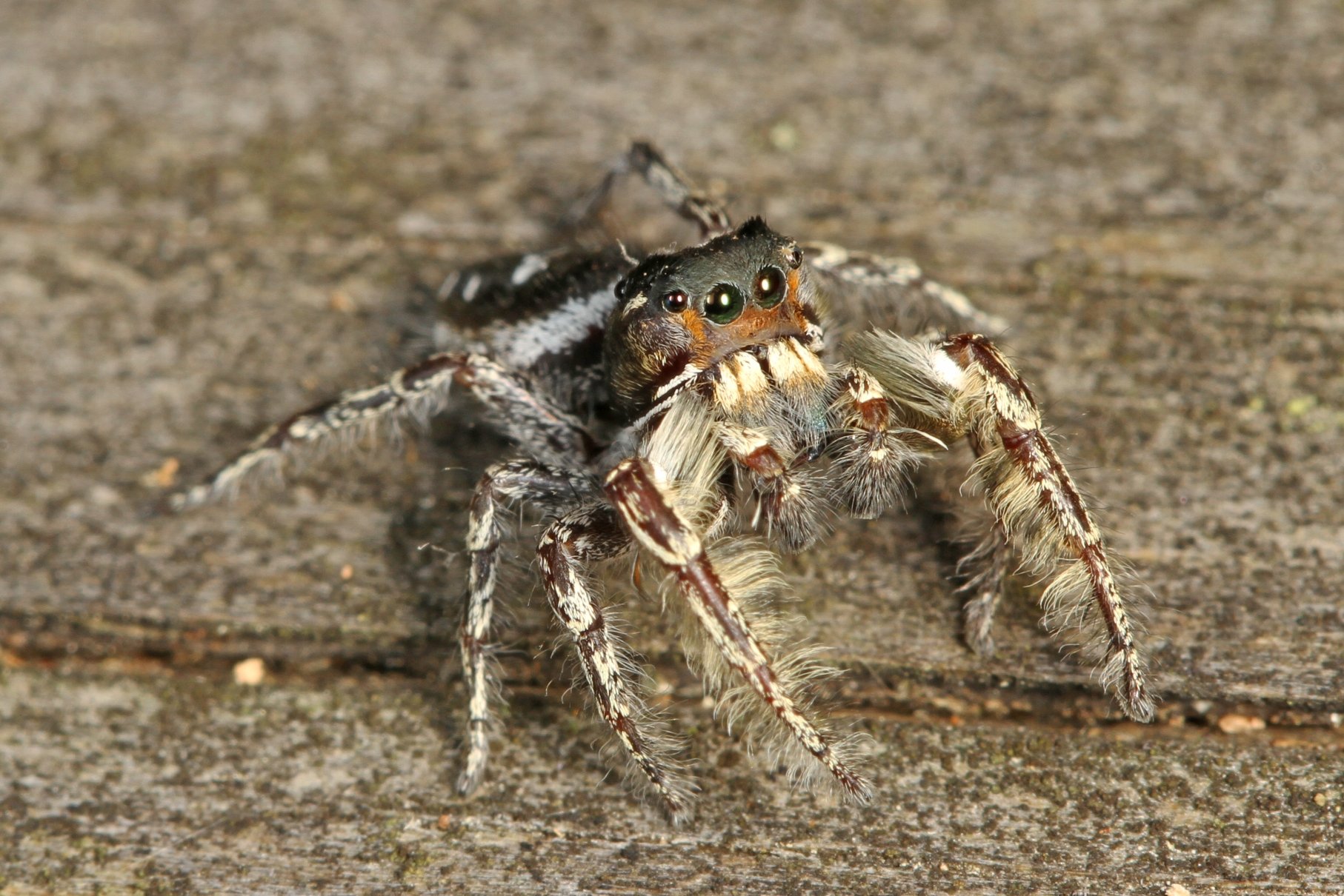Photo: Bold Jumper, Phidippus audax, Judy Gallagher
Judy Gallagher is an ASNV board member and a regular surveyor of local wildlife who also captures photos of what she sees, in particular the less common species.
Arachnophobes beware! This month's column is not for you. But if there ever were a spider that could charm its way into your heart, a jumping spider would be a likely candidate.
Sylvan Jumping Spider, Colonus sylvanus, Judy Gallagher
I really like them because they appear to interact with me - they don't seem worried that I am much bigger than they are. They have four sets of eyes encircling their head, two pairs pointing forward and two pairs pointing sideways and backward, so they can see almost 360 degrees. But different eyes serve different purposes. The central eyes see colors and recognize patterns and shape, while the other sets track movement. This is rather different from our eyes, which perform all the functions at once.
They can alter the pressure of their body fluid (hemolymph), which allows the spiders to jump well without having big legs like a grasshopper. Most jumping spiders can jump several times the length of their bodies.
Phidippus putnami, Judy Gallagher
There are about 6,000 jumping spider species worldwide, and we have dozens of species in our area (some without common names), including some that are exquisitely hairy and others that are almost hairless.
Tan Jumping Spider, Platycryptus undatus, Judy Gallagher
Like other spiders, they produce silk, but they don't use it for prey capture. They will use a line to guide them back to their previous location and can spin elaborate creations in which to overwinter.
Sylvan Jumping Spider with Crane Fly, Judy Gallagher
But for capturing food, they rely on their excellent vision, sneaking up on and capturing their prey. This spider will dine well on a crane fly, an insect much bigger than it is. But jumping spiders can also be prey for other jumping spiders, birds, frogs, toads, and lizards.
Ant Mimic Jumping Spider, Synemosyna formica, Judy Gallagher
Some jumping spiders disguise themselves to look like ants which helps them to avoid predation by mantises, ants, other jumping spiders, and birds. Spiders have eight legs as opposed to ants' six legs, so the spider waves its front leg pair around to look like antennae rather than legs.
Gemmed Satyr, Cyllopsis gemma, Judy Gallagher
They are such good predators that at least one butterfly has incorporated a jumping spider as part of its protection against predation. The Gemmed Satyr, only found in the southernmost part of our chapter's area, has a distinct image of a jumping spider on its wing.
Bold Jumper, Phidippus audax, Judy Gallagher
If I haven't convinced you yet to like spiders, how could you resist this charmer, "smiling" at you with green "teeth"?
View all of Judy’s Observations from Meadowood articles here.








